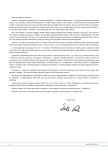THE MODERN ENDOCRINE EVALUATION OF THE INFERTILE MALE
Authors:
C. Niederberger
Authors‘ workplace:
College of Engineering
; University of Illinois at Chicago
; Department of Bioengineering
; College of Medicine
; University of Illinois at Chicago
; Department of Urology
Published in:
Urol List 2010; 8(4): 40-42
Overview
The evaluation and treatment of male infertility has undergone a revolution in the past 2 decades. The ability to use extraordinarily small amounts of sperm, sperm derived from the testis, and even dead sperm, to successfully create pregnancies with in-vitro fertilization and intracytoplasmic sperm injection fundamentally altered how infertile men should be evaluated. Even small changes in the hormonal milieu may result in profound prognostic and therapeutic implications. Based on the biological foundations of the male endocrine system, a rational approach to the evaluation of the infertile male is presented. This approach involves a thorough investigation into biologically active androgen, assessment of spermatogenic function, and appraisal of the involvement of related systems such as aromatase, thyroid and adrenal activity. With an accurate diagnosis, the clinician may then proceed with a sensible therapeutic approach to the infertile male.
KEY WORDS:
male infertility - endocrine evaluation - testosterone - testis
Sources
1. Caroppo E. Male hypothalamic-pituitary-gonadal axis. In: Lipshultz LI, Howards SS, Niederberger CN. Infertility in the Male, 4th ed. Cambridge: Cambridge University Press 2009 : 14–28.
2. Sokol RZ. Endocrine evaluation. In: Lipshultz LI, Howards SS, Niederberger CN. Infertility in the Male, 4th ed. Cambridge: Cambridge University Press 2009 : 199–214.
3. Boyle KE. Nonsurgical treatment of male infertility: empiric therapy. In: Lipshultz LI, Howards SS, Niederberger CN. Infertility in the Male, 4th ed. Cambridge: Cambridge University Press 2009 : 438–453.
4. Schoor RA, Elhanbly S, Niederberger CS et al. The role of testicular biopsy in the modern management of male infertility. J Urol 2002; 167(1): 197–200.
5. Wald M, Meacham RB, Ross LS et al. Testosterone replacement therapy for older men. J Androl 2006; 27(2): 126–132.
6. Plymate SR, Tenover JS, Bremner WJ. Circadian variation in testosterone, sex hormone-binding globulin, and calculated non-sex hormone-binding globulin bound testosterone in healthy young and elderly men. J Androl 1989; 10(5): 366–371.
7. Vermeulen A, Verdonck L, Kaufman JM. A critical evaluation of simple methods for the estimation of free testosterone in serum. J Clin Endocrinol Metab 1999; 84(10): 3666–3672.
8. Bhasin S. Testicular disorders. In: Kronenberg HM, Melmed S, Polonsky KS, Reed Larsen P. Williams Textbook of Endocrinology 11th ed. Philadelphia: W.B. Saunders Company 2008 : 647.
9. Raman JD, Schlegel PN. Aromatase inhibitors for male infertility. J Urol 2002; 167(2 Pt 1): 624–629.
10. Mills JN, Meacham RB. Nonsurgical treatment of male infertility: specific therapy. In: Lipshultz LI, Howards SS, Niederberger CN. Infertility in the Male, 4th ed. Cambridge: Cambridge University Press 2009 : 433.
Labels
Paediatric urologist UrologyArticle was published in
Urological Journal

2010 Issue 4
Most read in this issue
- WHAT IS CONSIDERED EROTIC IN NONVERBAL COMMUNICATION
- TREATMENT OF LOCOREGIONAL DISEASE IN PATIENTS WITH PENIS CARCINOMA
- TESTOSTERONE REPLACEMENT THERAPY AFTER PROSTATE CANCER: THE EMERGENCE OF A NEW CONCEPT IN CURRENT UROLOGIC PRACTICE
- THE MODERN ENDOCRINE EVALUATION OF THE INFERTILE MALE
